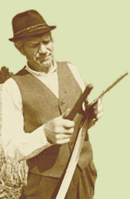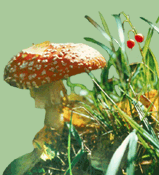Bird of the year: Shrikes
Tarvo Valker introduces shrikes − the birds that Estonian Ornithological Society has nominated as birds of the year. Although they belong to the group of singing birds, their lifestyle is that of a predator. There are two species of shrikes in Estonia: the Great Grey Shrike and Red-backed Shrike. The Great Grey Shrike inhabits bogs, but moves to cultural landscapes during the cold seasons. The Red-backed Shrike is more common, but they migrate to warm areas for the winter. Although good singers, they sing very rarely and are very sensitive to human influence while nesting.
Estonian Nature enquires
Peep Mardiste explains why the Copenhagen Climate Conference did not reach any results.
Jaak Jaagus writes about climate changes in general.
Estonian nature protection 100: The nature protection and forests of the Naissaar Island
Toivo Meikar takes a glance at the history of forestry at the Island of Naissaar − the ban to fell forest some 700 years ago was not about nature conservation, but a pure need to preserve forest resources for human consumption. However, often this document by King Erik VI Menved is considered as the first act of nature conservation on Estonian territory. The island received the official state of a conservation area only in 1992, and in 1995 the Naissaar Nature Park was founded. The author gives an overview of the forest history of the island, stating that Naissaar was first and foremost important as a daymark on sea, and the status of protection forest has also been essential. Currently, about 90% of the island is covered with forest.
Herbarium of fossils
Oive Tinn, Tõnu Meidla and Leho Ainsaar describe the worlds richest site of fossil algae at Otisaare/Kalana near Põltsamaa. The site, lagerstätte, is a sedimentary deposit that exhibits extraordinary fossil richness or completeness and is a source of happiness for all paleontologists. The ornament covering the stones in Kalana includes algae that have petrified over 400 billion years ago. The article describes different species of algae found from the lagerstätte, providing also exciting close-up photographs of the fossil organisms. The Kalana lagerstätte has the most diverse species composition of algae in the whole world. It is assumed that algae were very common in Silurian seas, but very few traces of these have been left behind.
The influenza virus transmission from migratory birds to aerosols
Mari Järvelaid convinces the reader to have a bite every morning and to maintain a high level of humidity in rooms: both actions help to prevent the influenza virus at least to some extent. She explains how influenza viruses spread from human to human and from animals to humans and other animals. It is important to maintain warm temperatures and high humidity (up to 80%) in rooms.
Interview: Environmental impacts should be estimated on global as well as local basis
Toomas Kukk has interviewed Tõnu Oja, Professor of Cartographics and Geoinformatics.
Raven, an intelligent can-opener
Jaanus Järva has taken pictures and written about ravens, which particularly catch ones eye in wintertime, when there is a lack of other birds. Ravens are the first ones to open cadavers and in wintertime, when the body is frozen, they call nearby foxes or wolves to open the cadaver. After ravens have opened or organized the opening of the cadaver, the eagles show up. The author, alongside with numerous photos, describes his observations of this intelligent bird and its lifestyle.
Owls in peoples minds and memories
Mall Hiiemäe looks at the results of the joint call of Estonian Ornithological Society and Estonian Literary Museum for peoples memories and drawn pictures about owls. It is quite clear that owls are known as birds of omens − there were many stories that were folk tales of omens associated with the ways owls have made sounds or acted.
More about fur
Rein Viitas comments the photos that illustrated the story on fur farms in the November issue of Eesti Loodus, warning against incompetence that leads to false conclusions. He explains how Estonian fur farms fulfill all regulations brought about by specific directives and one by one, elucidates on the actual background of the photos, proving the accusations in November issue false.
From the limestone cliffs of Zemgale to the karst dolines of Lithuania
Tapio Vares views the noteworthy natural sites of Southern Latvia and takes a look at the Lithuanian karst dolines. Driving through the gentle landscapes of Zemgale, he saw mostly cultural landscapes, but also great rivers with noteworthy canyons. The karst around the town of Birþai is more amazing that expected. On the contrary to the modest Estonian karst, the Lithuanian karst is more active and can cause real problems to households.
|


![[IN ENGLISH]](images/gb.gif)






